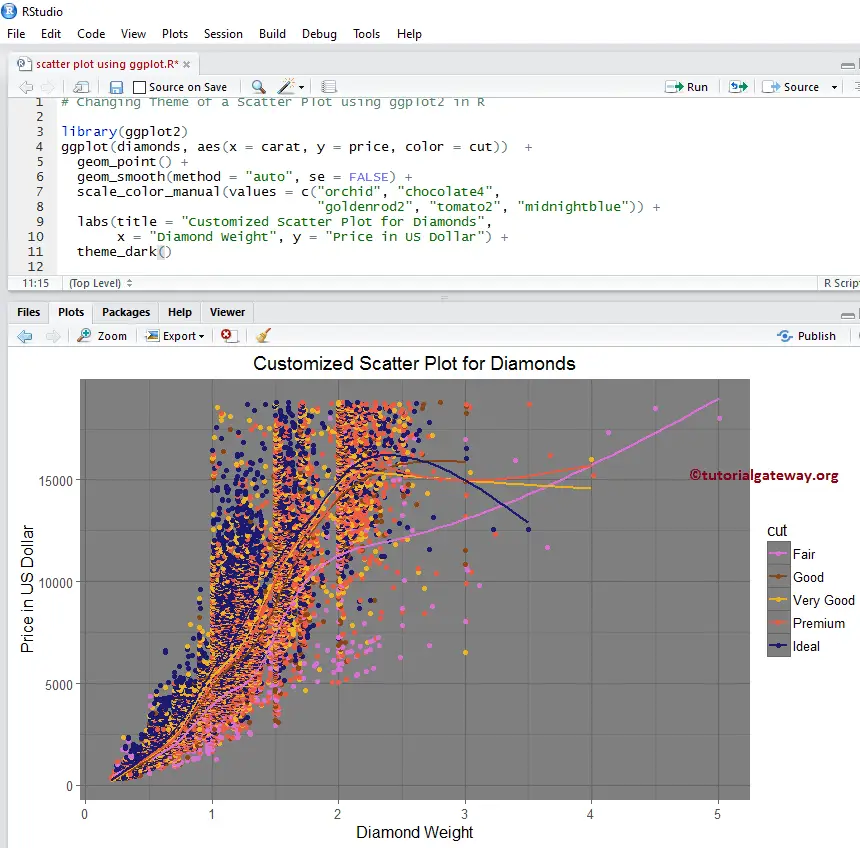

95 data ellipse from John Fox's car package can enclose the points of the scatterplot.įor one variable, based on the standard R function stripchart, plots a one dimensional scatterplot, that is, a dot chart, also called a strip chart. The same numeric values of the standard R function cor.test function are generated, though in a more readable format. If a scatterplot of two numeric variables is displayed, then the corresponding correlation coefficient as well as the hypothesis test of zero population correlation and the 95% confidence interval are also displayed. The color of the line segments and/or the points, background, area under the plotted line segments, grid lines, and border can each be explicitly specified, with default colors provided by one of the pre-defined color themes as defined by the set function. One enhancement over the standard R plot function is the automatic inclusion of color.

An alternate name for ScatterPlot is just Plot. For Likert style response data of two variables, so that each value has less than 10 unique integer values, the points in the plot are transformed into a bubble plot with the size of each bubble, i.e., point, determined by the corresponding joint frequency. The first variable can be numeric or a factor. If the values of the first specified value are sorted, then points are connected via line segments. For two variables also produces an analysis of the correlation coefficient. Generates scatter plots for one or two variables.

Join Appsilon and work on groundbreaking projects with the world’s most influential Fortune 500 companies.ScatterPlot: Scatterplot for One (Dot Plot) or Two Variables Description Abbreviation: sp
#Scatterplot r studio how to#
You’ve learned how to change colors, marker types, size, titles, subtitles, captions, axis labels, and a couple of other useful things. Today you’ve learned how to make scatter plots with R and ggplot2 and how to make them aesthetically pleasing. With this layer, you can get a rough idea of how your variables are distributed and on which point(s) most of the observations are located.

Here’s how to import the packages and take a look at the first couple of rows: It’s one of the most popular datasets, and today you’ll use it to make a lot of scatter plots. R has many datasets built-in, and one of them is mtcars.


 0 kommentar(er)
0 kommentar(er)
